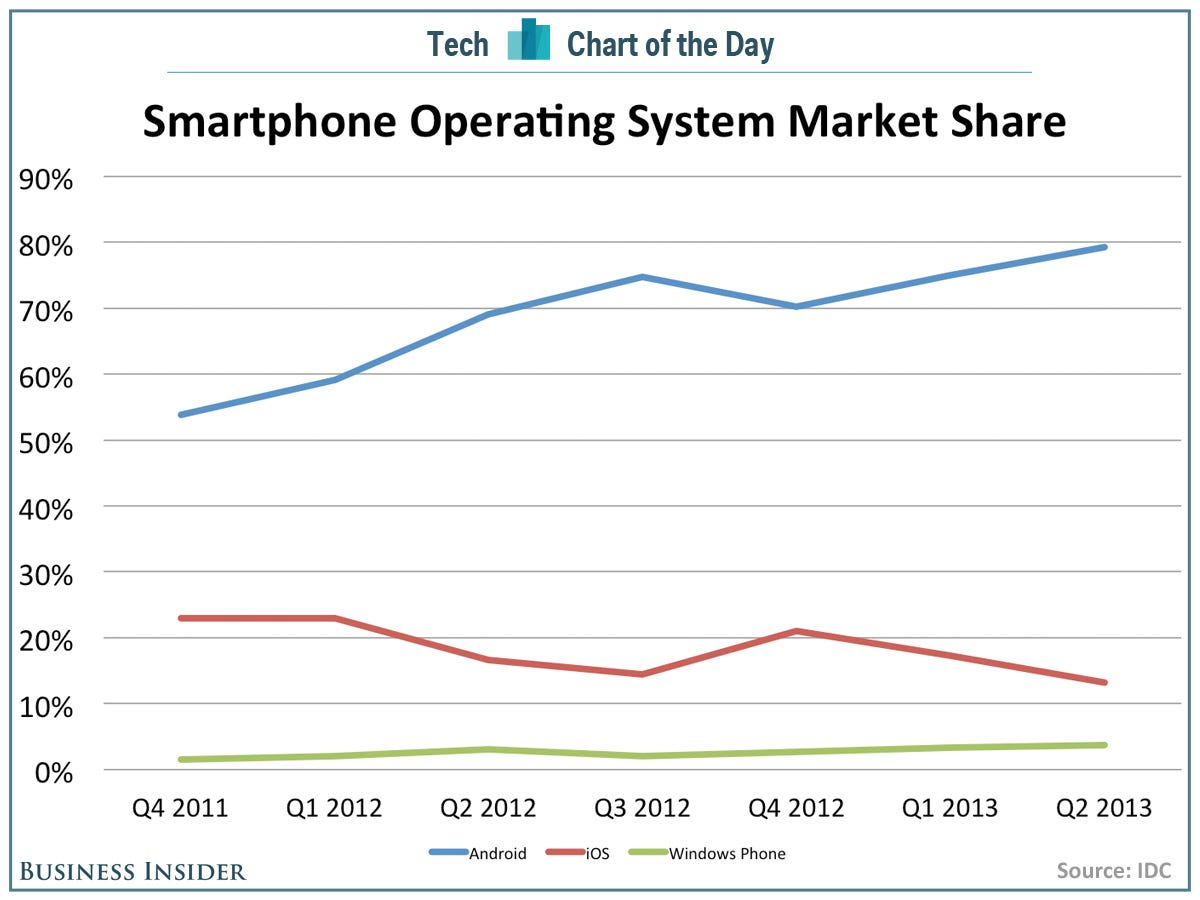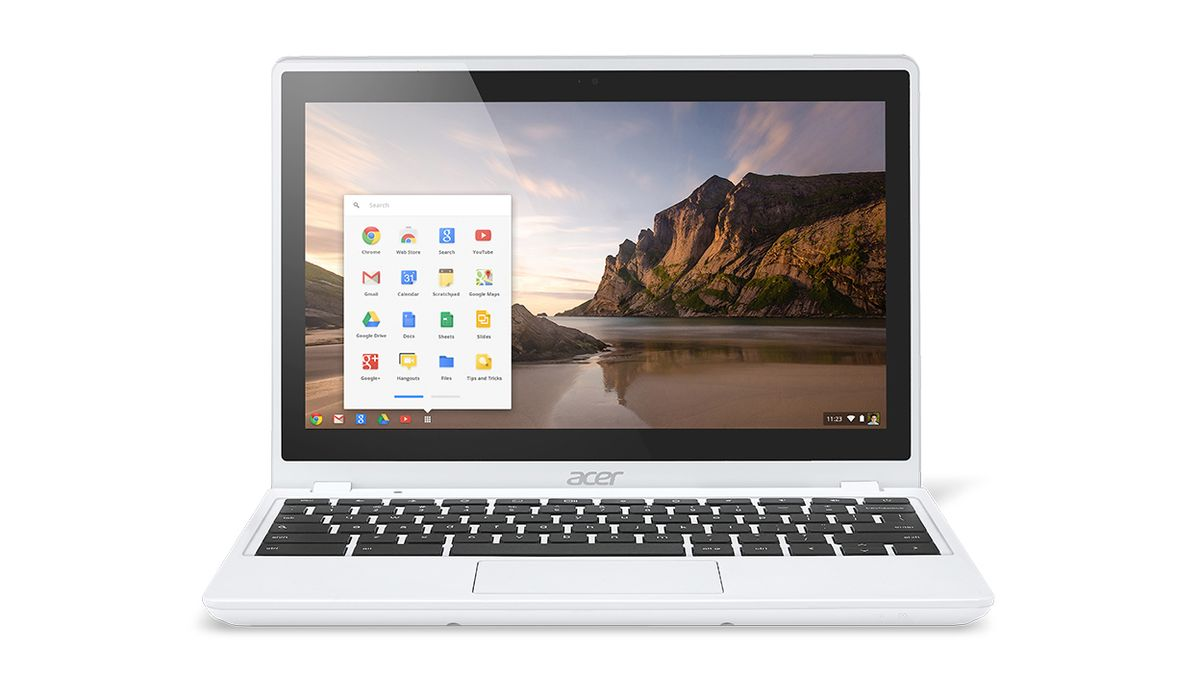The Windows Phone market share has shown signs of gradual growth, making it an intriguing player in the smartphone landscape. While industry giants like Apple and Android continue to dominate, recent statistics reflect a noteworthy 5.6% market share, indicating an increase from 3.8% the previous year. Notable brands, such as Acer, are taking a measured approach, with their executives commenting on the operating system’s potential, particularly with the advancement of Windows Phone 8. This platform is attracting interest, especially among first-time smartphone buyers who are seeking alternatives to more established brands, creating a promising demographic for future growth. If trends continue, the Windows Phone could very well position itself as a viable contender in the market, especially with the support of key manufacturers and a growing user base.
Introducing the realm of Microsoft’s mobile operating system, the Windows Phone represents a significant yet underappreciated alternative in the smartphone sector. As companies like Acer evaluate their smartphone offerings, the opportunity for growth in the sector cannot be overlooked, particularly in light of recent market statistics pointing to rising adoption among new users. The synergy of Windows Phone 8, along with its integration with popular services like Xbox, makes it an appealing option for those transitioning from feature phones. Additionally, the emergence of budget-friendly models is particularly attractive to first-time smartphone buyers, offering them a functional yet economical choice. As the landscape shifts, the Windows Phone is poised for a potential resurgence, driven by innovation and strategic partnerships within the industry.
The Rise of Windows Phone in a Competitive Market
Windows Phone, while historically lagging behind iOS and Android in terms of market share, has recently shown promising growth statistics that warrant attention. According to Kantar Worldpanel ComTech, Windows Phone accounted for 5.6% of the smartphone market in April, marking a significant leap from 3.8% the previous year. This surge suggests that there is an increasing awareness and acceptance of the platform, particularly among first-time smartphone buyers looking for budget-friendly options. As Microsoft bolsters its partnerships, particularly with Chinese manufacturers like Huawei and ZTE, the potential for further market penetration becomes evident.
Moreover, the interest in the Windows Phone ecosystem is not solely based on numbers; it’s about the unique features that appeal to users. Windows Phone 8, with its seamless integration with Xbox and robust enterprise capabilities, positions itself as a strong contender for those within enterprise markets wanting versatile devices. As manufacturers like Acer contemplate their roles in this evolving landscape, the growth of Windows Phone could mean reassessing their strategies to potentially incorporate this operating system into their offerings.
Windows Phone Market Share: A Future Perspective
The current market share of Windows Phone, while small compared to iOS and Android, is a crucial indicator of future trends. Analysts from Canalys predict that by 2017, Windows Phone could see its market share nearly surpass that of the iPhone, forecasting a 12.7% share against the iPhone’s 14.1%. This insight reflects not only the current momentum of Windows Phone but also hints at the strength of its upcoming mobile offerings, particularly as the platform continues to engage new manufacturers and expand its reach across global markets.
What makes this trajectory even more compelling is the demographic shift toward Windows Phone among first-time smartphone buyers, a segment that represents a significant market opportunity. Many of these consumers are transitioning from feature phones, further amplifying the growth potential of Windows Phone. With over half of the U.S. market still navigating the transition from basic phones to smartphones, the adoption of Windows Phone could result in exponential growth, particularly if these users find value in the operating system’s unique offerings and user-friendly features.
Acer’s Stance on Windows Phone: A Strategic Overview
Acer appears to be taking a cautious approach towards the Windows Phone platform in light of current market conditions. According to Allen Burnes, their VP of Smartphones for EMEA, the hesitation to launch a Windows Phone device stems from the perceived lack of awareness regarding the platform among the consumer base. While acknowledging the appeal of Windows Phone 8, especially its integration with various Microsoft services, Acer’s decision to delay entering this market seems to be based on a calculated analysis of potential sales and business viability.
However, as Windows Phone grows its footprint, Acer may need to revisit its stance. With predictions of increasing market share and a growing demographic of first-time buyers, timing could be key for Acer’s potential entry into the Windows Phone sector. A shift in consumer behavior towards Windows could lead to a reevaluation of their product strategy, aligning Acer with emerging technologies that could soon take a larger share of the smartphone market.
The Role of Chinese Manufacturers in Windows Phone Adoption
Chinese manufacturers are seen as pivotal players in the potential success of Windows Phone, contributing to its expected growth in market share. Industry experts have highlighted that companies like Huawei, ZTE, and Lenovo are already established allies of Microsoft, enhancing the Windows ecosystem’s reach and capability. This collaboration not only boosts Windows Phone’s appeal through competitive pricing but also ensures that the devices are equipped with the latest technology, making them attractive to budget-conscious consumers.
The partnership with Chinese manufacturers could lead to a significant uptick in Windows Phone adoption rates, particularly in emerging markets. Given that a substantial portion of the population in these regions are first-time smartphone users, the accessibility and cost-effectiveness of devices running on Windows Phone could solidify its market share. As these manufacturers ramp up production and marketing efforts, we might witness a marked increase in Windows Phone visibility and popularity among new smartphone users.
Windows Phone: Embracing First-Time Buyers
The Windows Phone platform is uniquely positioned to capitalize on the emerging trend of first-time smartphone buyers, particularly those transitioning from feature phones. Research by Kantar Worldpanel indicates that a significant portion of new Windows Phone users were previously using basic mobile phones, suggesting that Windows offers an appealing upgrade path for consumers seeking more functionality without committing to higher costs typically associated with premium smartphones.
This demographic not only values affordability but also benefits from the intuitive interface and streamlined experience that Windows Phone offers. As more consumers make the jump from feature phones, Windows Phone’s growth could accelerate, supported by the corresponding innovations in the operating system and its marketing strategies aimed at educating potential users on the benefits of switching. Fostering a positive user experience will be critical as Microsoft looks to enhance its brand during this crucial phase of expansion.
Forecasting Windows Phone Growth Through 2023
Looking ahead, the growth trajectory of Windows Phone might surprise many skeptics. With a current prediction of reaching nearly 13% market share by 2017, it will not just be a growing alternative to established platforms but could potentially carve out a niche for itself in a crowded marketplace. The factors driving this growth include effective partnerships, particularly with affordable device offerings that resonate with first-time buyers, and an aggressive push to elevate brand awareness.
As Microsoft continues to leverage its ecosystem by integrating services across devices, the attraction of Windows Phone will likely be enhanced. If the platform can maintain its momentum and capitalize on the existing demographic of users looking to upgrade from feature phones, it may well see broader adoption over the next few years. Ultimately, the intertwining of market strategies focused on consumer education and innovative OS features will be integral to predicting the future of Windows Phone growth.
Acer’s Cautious Approach to Windows Phone Development
Acer’s cautious approach towards developing Windows Phone devices showcases the intricate landscape of smartphone marketing. By recognizing the current market share limitations and the need for increased consumer awareness, Acer is mapping its future in a way that aligns potential market risks with company growth. The hesitancy expressed by Acer’s executives regarding the launch of a Windows Phone reflects a strategic decision-making process influenced by existing market dynamics. They must ensure any investment aligns with consumer demands, particularly among first-time smartphone buyers.
Their current outlook could shift if Windows Phone continues to gain traction. Should consumer awareness improve and market statistics depict sustained growth, Acer may reconsider its stance. The integration of Windows Phone’s attractive features could play a vital role in enticing both consumers and manufacturers alike. As the company’s executives remain observant of how the market evolves, they may find opportunities to introduce Windows-based smartphones that tap into an expanding customer base.
The Future of Windows Phone in Global Markets
The future of Windows Phone is poised for growth not just in North America but globally, especially as it finds market presence in developing regions. The rising inclination towards smartphones in these areas positions Windows Phone favorably as it appeals to a large demographic looking for affordable devices without sacrificing quality. The partnerships that Microsoft has formed with manufacturers are critical in propelling these devices into new markets, allowing Windows Phone to gain traction among reluctant adopters.
In conclusion, as Microsoft strengthens its alliances and reshapes its marketing strategy to boost brand recognition, Windows Phone’s share is expected to increase over time. The integration of user feedback and proactive enhancements to the operating system could very well establish Windows Phone as a key player in the years to come. The interplay of budget-conscious devices appealing to first-time users could catalyze a significant change in market dynamics, leading to a more prominent positioning for Windows Phone in the global smartphone arena.
Frequently Asked Questions
What are the current statistics on Windows Phone market share?
As of April, Windows Phone holds a market share of 5.6%, reflecting a significant increase from 3.8% the previous year, according to Kantar Worldpanel ComTech. This growth indicates a positive trend for Windows Phone statistics.
How is Windows Phone growth impacting the smartphone market?
Windows Phone growth is notable as it has been identified as the fastest-growing smartphone operating system. Increased adoption, particularly among first-time smartphone buyers, is driving this trend, positioning it for potential market share gains against established platforms.
Are manufacturers like Acer considering entering the Windows Phone market?
Acer has expressed interest in Windows Phone but has opted against releasing a device due to concerns about market awareness. According to their VP, Allen Burnes, while Windows Phone 8 presents appealing features, the marketing visibility remains a challenge.
Why is Windows Phone appealing to first-time smartphone buyers?
Windows Phone attracts first-time smartphone buyers due to its affordability and user-friendly interface. Many users upgrading from feature phones find Windows Phone a suitable choice, making it a growing segment of the Windows Phone market share.
What role does the Lumia brand play in Windows Phone market share predictions?
The Lumia brand is anticipated to significantly boost Windows Phone market share, especially as partnerships with Chinese manufacturers like Huawei and ZTE expand. Analysts suggest these relationships will enhance market penetration, paving the way for future growth.
Will Windows Phone surpass iOS in the future?
Predictions from Canalys suggest that by 2017, Windows Phone could nearly reach the iPhone’s market share, potentially achieving 12.7%. This growth is contingent upon continued uptake from Chinese vendors and increased visibility among consumers.
How has Windows Phone’s market presence changed recently?
Recent reports indicate that, despite a historically small market presence, Windows Phone is gaining traction. With increased recognition and strategic partnerships, the platform shows promise for enhanced market share and consumer adoption in the near future.
What challenges does Windows Phone face in the smartphone market?
Despite recent growth, Windows Phone still faces challenges such as low market awareness and competition from dominant players like iOS and Android. Manufacturers like Acer are hesitant to invest further until they see a more robust demand.
What potential does Windows Phone have regarding future growth?
The future growth potential for Windows Phone appears positive, particularly with its appeal among budget-conscious first-time smartphone buyers and strategic manufacturing partnerships, which may drive further expansion in the smartphone market.
How is the market perception of Windows Phone among manufacturers?
While manufacturers like Acer recognize the capabilities of Windows Phone 8, the prevailing market perception is cautious. The lack of widespread awareness poses a barrier to investment, influencing manufacturers’ decisions in the short term.
| Point | Details |
|---|---|
| Market Share Status | Windows Phone is gradually gaining market share, currently at 5.6%, and predicted to grow. |
| Acer’s Position | Acer has decided not to release a Windows Phone, citing lack of awareness. |
| Positive Remarks by Acer | Acer’s VP acknowledges the potential of Windows Phone but remains cautious. |
| Comparison to Competitors | Windows Phone is gaining but still far behind iOS and Android. |
| Predicted Growth | By 2017, Windows Phone may reach a 12.7% market share. |
| Chinese Market Impact | Chinese manufacturers like Huawei and ZTE are expected to boost Windows Phone adoption. |
| Target Demographic | Windows Phone is popular among first-time smartphone buyers, particularly those upgrading from feature phones. |
Summary
The Windows Phone market share is currently under the spotlight as it steadily gains ground, reaching 5.6% recently, with predictions indicating it could rival the iPhone by 2017. Notably, while companies like Acer are hesitant to enter the market due to low awareness, the increasing acceptance among Chinese manufacturers and first-time smartphone buyers is likely to change this landscape in the near future. As these dynamics unfold, we may see Acer reevaluate its position regarding Windows Phone.



